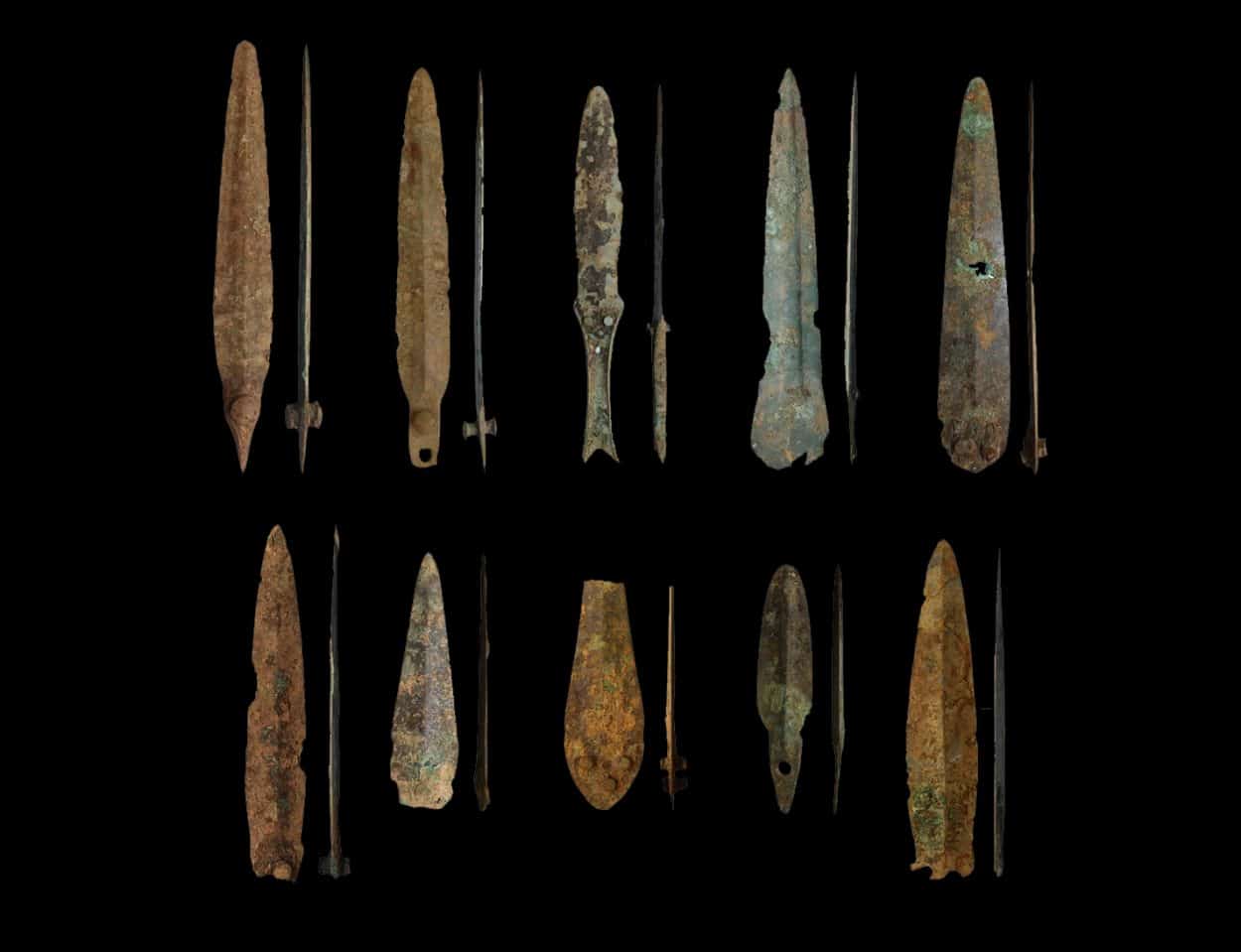A new study led by Newcastle University has revealed that Bronze Age daggers were used for processing animal carcasses and not as a non-functional symbol of identity or status.
Copper-alloy daggers first appeared during the 4th millennium BC, becoming widespread across Europe where they were often found in weapon rich burials known as “warrior graves”. Archaeologists have long suggested that they were primarily used as ceremonial objects in funerals to mark the status or identify of the deceased, or used as weapons and tools for crafts.
A revolutionary new method has enabled the first extraction of organic residues from ten copper-alloy daggers excavated in 2017 from Pragatto, a Bronze Age settlement site in Italy. The technique used Picro-Sirius Red (PSR) solution to stain organic residues on the daggers, which were then observed under several types of optical, digital and scanning electron microscopes.
This allowed the team to identify micro-residues of collagen and associated bone, muscle and bundle tendon fibres, suggesting that the daggers had come into contact with multiple animal tissues and were used to process various types of animal carcasses during the slaughtering of livestock, butchering carcasses and carving the meat from the bone.
Researchers then carried out wide-ranging experiments with replicas of the daggers to demonstrate the suitability for processing animal carcases and extracted residues from the experimental daggers for comparison with their Bronze Age counterparts.
Professor Andrea Dolfini, Chair of Archaeology, Newcastle University, said: “The research has revealed that it is possible to extract and characterise organic residues from ancient metals, extending the range of materials that can be analysed in this way. This is a significant breakthrough as the new method enables the analysis of a wide variety of copper-alloy tools and weapons from anywhere in the world. The possibilities are endless, and so are the answers that the new method can and will provide in the future.”
https://doi.org/10.1038/s41598-022-09983-3
Header Image Credit : Scientific Reports





